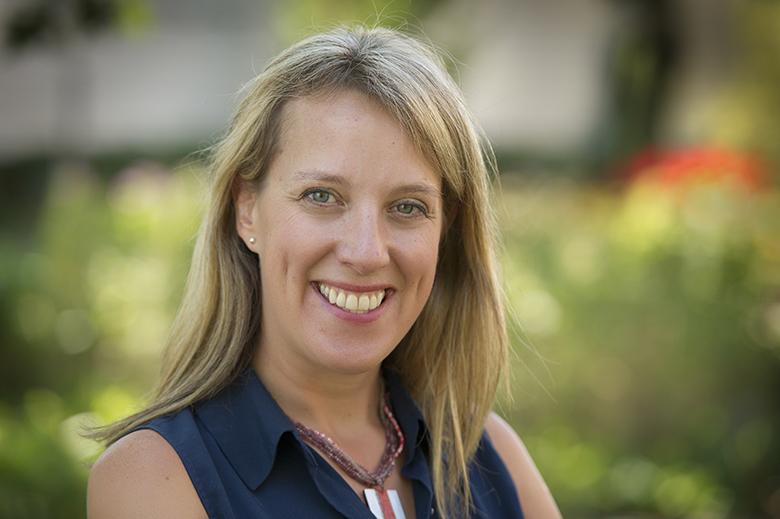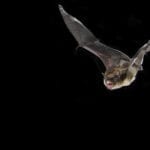On July 1st, 2016, the Canadian Journal of Microbiology welcomed Drs. Kari Dunfield and Chris Yost as the journal’s new Editors. Kari is a Tier 2 Canada Research Chair in Environmental Microbiology of Agro-Ecosystems, and an Associate Professor in Applied Soil Ecology in the School of Environmental Sciences at the University of Guelph. Kari and Chris are replacing Drs. James J. Germida and Anthony J. Clarke – we are grateful for their hard work and commitment to the journal. Dr. Dunfield is a long-time member of the Canadian Society for Microbiologists, and served as the Education and Careers Chair for 4 years. She has been an Associate Editor for the Canadian Journal of Microbiology since 2012. Please help us in welcoming Dr. Dunfield in her new role with the journal.
We spoke with Dr. Dunfield to learn a bit more about who she is and what she is interested in.

Image: University of Guelph
Q: What first got you interested in microbiology? How did you end up researching soil?
As an undergrad at the University of Calgary, I took Cellular Molecular Microbial Biology in the Department of Biological Sciences. It gave me a great foundation for my future research interests— using molecular tools to study microbial communities. After I finished my degree at U of C, I wasn’t sure what I wanted to do with my life, so I answered a job ad from Gustafson Inc., an ag-chemical company looking for a microbiologist who could drive a tractor (one summer after my third year in undergrad I worked on a family farm ). It was the perfect fit for my interests, combining field experiments with lab work and ended up leading to an MSc project at the University of Saskatchewan working on seed treatments applications of Rhizobium leguminosarum, a nitrogen fixing soil organism.
Q: Your research uses molecular techniques to characterize soil microbial diversity and function, and how agriculture practices affect these soil microbial ecosystems. How do you describe your research when speaking with non-scientists?
When describing my research to my kids or other non-scientists, I usually tell them that there are billions of microbes in a teaspoon of soil and that we can’t see them or grow them easily in the lab. Many of these organisms play important roles in the soil, such as helping plants grow, holding soil in place, and releasing nutrients for plants. My research fingerprints the organisms in the soil to help us identify which ones are there and how they change in different soils and fields.
Q: What are some of the more surprising or unexpected things your lab has found?
I think people would be surprised if they realized how quickly microbial communities can change in the field. We see very rapid changes in the microbial processes we’re interested in, such as those associated with greenhouse gas emissions, almost immediately after a shift in the environment, such as a rain event or an agricultural event like soil tillage or fertilization. It makes sampling at capturing these changes in the field challenging, but it’s exciting when you are successful.
Q: What qualities do you look for in prospective students? How do these qualities reflect your lab as a whole and how you believe science should be conducted?
The most important qualities I look for in a graduate student are a love of learning, keen interest in the research, and being a hard worker.
Q: Soil microbiology made quite the stir in the news recently when Kim Lewis and his colleagues announced that they isolated a new antibiotic, teixobactin, from soil microbes. Why does soil have so much potential in advancing our understanding and utilization of microbiology?
The diversity of microorganisms in the soil is amazing. We know organisms are there, based on the genetic sequences we find in the soil, but we have only been able to culture a very small percentage of these organisms in the lab. The better we get at growing and culturing these organisms, the more chance we have at identifying their applied uses. I would not be surprised if we continue to find new antibiotics or other useful chemicals in the soil.
Q: Your research has far-reaching implications in ecology, climate change, plant health, among other fields. How does your research impact the everyday lives of most people?
Agricultural systems provide food, fiber and bio-fuel for society. My research is really focused on trying to understand and identify agricultural practices that minimize the environmental impacts of agricultural systems. Hopefully these practices will make agricultural systems more sustainable.
Q: What motivated you to become Editor of the Canadian Journal of Microbiology?
I believe in supporting microbiologists in Canada. I am a member of the Canadian Society of Microbiologists and I think that CJM provides an excellent avenue for Canadian scientists to publish their research in a high quality international journal. I also am proud of the commitment that CJM has made to support Canadian scientists—Canadian Science Publishing, publisher of the Canadian Journal of Microbiology, has been sponsoring the CSM Murray Award for Career Achievement since 2011. This award highlights the life work of a senior Canadian scientist every year.
Q: You joined the editorial team of CJM on July 1st at the same time as Dr. Chris Yost from the University of Regina. Have you worked with Dr. Yost before? What do you think the two of you will bring to the journal?
Yes, I have known Chris for several years, and I am excited to work with him as co-Editors. Actually, he was my TA at the University of Calgary for one of my undergrad microbiology classes. Chris and I have a few ideas to expand the scope of the journal, and also to promote CJM as a journal for Canadian microbiologists.
Q: What are you excited for in your new position as journal editor?
I am really excited to learn about new areas of microbiology research outside of my background in environmental microbiology. One terrific aspect of CJM is that it is a general microbiology journal. A big learning curve for me, moving from Associate Editor of Microbial Ecology to Editor-in-Chief, will be evaluating submissions outside of my area of expertise. I’m really looking forward to getting to know the Associate Editors in the other areas, and learning about some new fields of microbiology.
Q: When you aren’t busy with all of your scholarly commitments, what do you like to do in your free time?
I am the mother of two children, Alexis, who is 12, and Cooper, who is nearly 9. When I’m not physically at the University, I’m often found at the side of a pool or in a baseball field, supporting my kids playing sports. In fact, you will often see me with a laptop at some of these events— I am a terrific multi-tasker. I also have a 4-year old yellow lab, who is my running partner. Most mornings you’ll find me starting my day hitting the pavement or a trail, running with him.




